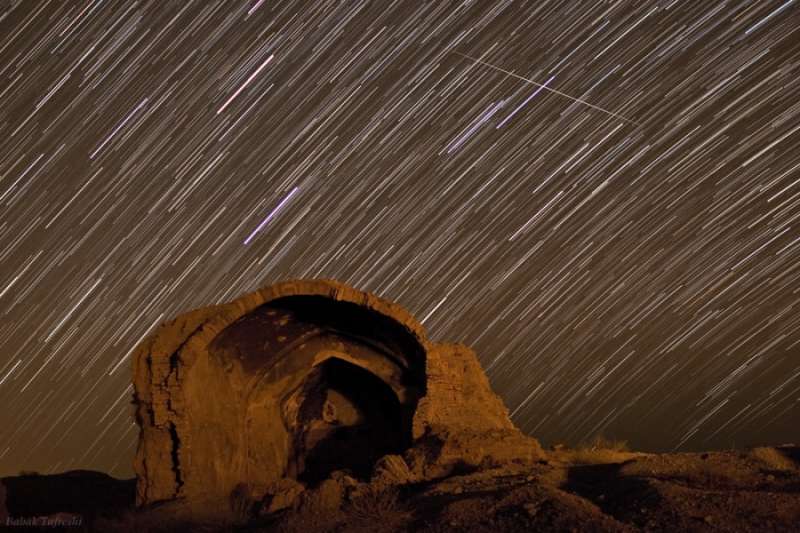
|
Credit & Copyright: Babak Tafreshi
(TWAN)
Explanation:
The Quadrantid Meteor Shower
is an annual event for planet Earth's
northern hemisphere skygazers.
It usually peaks briefly in the cold, early morning hours of January 4.
The shower is named for its
radiant point on the sky within the
old, astronomically obsolete constellation
Quadrans
Muralis.
That position is situated near the boundaries of the modern
constellations Hercules, Bootes, and Draco.
In this haunting time exposure,
two quadrantid meteor streaks are captured
crossing trails
left by rising stars
of the constellations Virgo and Corvus, but Saturn
leaves the brightest "star" trail.
The meteor streaks, one bright and one faint, are nearly parallel
above and right of center in the frame.
Fittingly, the old cistern structure in the foreground lies
above the now
buried city of Qumis.
Known as a city of many gates, Qumis (in Greek history
Hecatompylos),
was founded 2300 years ago in ancient Persia.
|
January February March April May June July August September October November December |
| |||||||||||||||||||||||||||||||||||||||||||||||||||||||
NASA Web Site Statements, Warnings, and Disclaimers
NASA Official: Jay Norris. Specific rights apply.
A service of: LHEA at NASA / GSFC
& Michigan Tech. U.
Based on Astronomy Picture
Of the Day
Publications with keywords: meteor - meteor shower - star trail
Publications with words: meteor - meteor shower - star trail
See also:
- APOD: 2025 September 13 Á Star Trails over One Mile Radio Telescope
- APOD: 2025 August 25 Á The Meteor and the Star Cluster
- APOD: 2025 August 6 Á Meteor before Galaxy
- Savudrija Star Trails
- APOD: 2024 December 10 Á The Great Meteor Storm of 1833
- APOD: 2024 November 27 Á The Meteor and the Comet
- Meteor over the Bay of Naples
